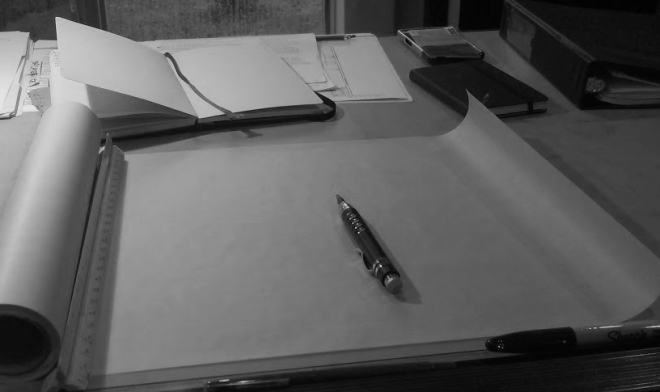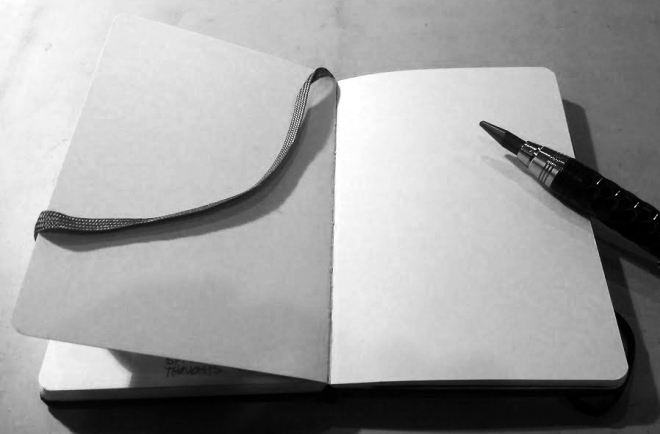As we near the end of this year, I’ve been thinking about architects and possibilities. If you are not an architect or do not play one on TV, this may not make sense to you.
Architects love possibilities.
Architectural Design
I think it is one of the aspects of design and this profession that motivates us. At times it makes us downright giddy. See, we love to develop ideas and designs and we love to tweak them, polish them, edit them, and refine them. However, there’s something enticing about the beginning of a project or the beginning of a phase of a project where decisions have yet to be made and all the possibilities in the world are available. Now the phrase “all of the possibilities in the world” may be an exaggeration. Yet, prior to making that first mark or prior to having the first thought, we as architects love those possibilities that exist.
This is actually a double edged sword in certain ways. For when we make that first mark, that first gesture or even that first model in some ways we mourn the fact that we have eliminated some possibilities. The opportunities that exist before that gesture is made are enticing. However, we have to move forward. Thus we make more marks, create more models or scribble more definition and we become seduced by the development. Do you see that something paradoxical is going on here in the removal of possibilities? We begin to discover the existence of more possibilities as the design progresses. Creativity blossoms with great constraint.
If you’re confused, hang in there.
Let me give a simple example. If I make a straight-line implying an edge, a direction, a boundary or even a wall then that straight-line implies that it cannot be curved or angular or anything else. Sure, we can alter that, edit it, or change it. But at that moment of making a decision, some possibilities were eliminated. You might be thinking why does that matter? In order to make real architecture, decisions must be made otherwise it becomes a philosophical Möbius strip that never ends. Nothing would ever get accomplished. I understand architects understand that, thus the paradox. Obviously we go forward; we make decisions as a team of multiple members and many requirements. Within the boundaries of possibilities, architecture is found.
Architectural Education
Recently, my students went through the traditional end-of-semester jury review. If you’re not familiar with this curious part of our culture, it is something to be witnessed in order to understand it or at least apprehend it. It is at these moments where you will find a manifestation of what I’m talking about.
Picture a group of architects (dressed in black) sitting around a student’s model or series of drawings discussing strengths of the solution in front of a nervous student. However, what you will see are architects wondering about possibilities. You will hear a unique language posing the possibilities that should have been considered–or might have been considered–as a means for the students to continue to think about their work and an effort to augment their learning.
This is what we do.
Afterwards I spent some time with a few of my students clarifying to them that this process is not necessarily being critical of the work they produced. In fact it is mysteriously complementary.
Architectural Practice
As we move forward into 2014, we read many things about resolutions one ought to make in the year to come. Those are possibilities. We also have those who are asking us to look back and consider celebrating the events and successes of the past year. Prior to looking forward and wondering about possibilities ask yourself, could you have imagined the events and successes you had this year? If you could have predicted it, would that have affected your decision making? Instead, you made a mark, then another and continued on.
In the first blank sketchbook page of 2013, prior to history recording that first event in your practice, could you have imagined any of the successes or even failures that happened this past year?
It is something to think about.
…all the best in the coming year.







Thanks for making this post! It not only explains the whole design studio /design process question to me, but it completely brings to light the purpose of crits and makes me see why it makes sense that a crit could be harsh and a mark the opposite. Thank you! If students approach you with design questions, I would suggest you tell them what you wrote here! And to draw draw draw etc and make models; to do, and make decisions (to get out of the “mobius strip of possibility”). And most importanty to not be afraid of making these decisions and “eliminating” possibilities. Interestingly enough, the early eliminated possibilities actually come back when the project decisions have developped the design further. Everything has a place and a time just right for it. I like how this post is applicable to life as well! Have a great holiday and fantastic New Year!
Wow, thanks for sharing and the encouragement back. I most definitely will continue to share with my students.
I love this post. I also love that lead holder. What is it’s name and where can I get one?
Thanks and thanks for the G+ comments.
I love this lead holder too. Koh-i-noor Plastic Lead Holder, Metal Fittings, with Sharpener 5306 by Koh-I-Noor Pencils. You can search for 5.6mm lead holders. The end cap unscrews and you use it to sharpen the lead. It’s my geeky indulgence. I got it on Amazon.
I just bought 2. plus a ton of lead. 🙂 I have a few lead holders I can’t use because they don’t fit in my sharpener. You’d be surprised how limited the drafting supplies are in these parts. It’s…..annoying.
Now I need a 2mm lead holder that is equally as fat. I found standard thin ones that remind me of drafting lead holders or engineering pencils. I need architect geeky pencils.
Unlike the health professions, architects have failed to educate the public on the contribution that good architecture can make to the quality of life. Why isn’t there a weekly newspaper column available on the influence of good architecture on our lives. Only 4 papers in the US an architectural critic.
Believe me I’m trying. Pittsburgh’s Post Gazette has an architectural critic but it’s more of a feature column. Architectural and construction trade journals do feature articles from time to time that address this. However, I’m with you the AIA and other general magazines should be doing more to promote this. It is well documented the influence architecture has on healing, learning and increased productivity. Thanks.
I think it has to do with the snobby view the profession has towards everything (incl. clients) but for itself… Of course then everyone else turns out to be unimportant to architecture and to the making of architecture from that point of view, the profession would have no need to educate the public, because it views it as something forever outside of itself and of its interests.
I am reading this book “Architecture in the Space of Flows”, and there is a chapter on the Rom-Hoo Market, where the writer is analyzing the market’s spontaneity, how it arises from a need and is purely functional, and how this makes every market stall seller an architect of sorts. It is probably akin to Kowloon Walled City. But to me they delivered that latter part of the essay in a tone that would suggest this as a phenomena… I think this is the problem that architects do not view “laymen” as architects (they dont have to be seen as professional architects, but whenever someone creates anything they are essentially architect-ing), and it is linked with the education of an architect being so broad that a lot of people cannot seem to know what it is from the profession itself… Often times when you spend too much time with yourself you end up lost, and a bit deluded since your ideas have no one else to be bounced off of. I think this has happened with architecture. It is apparently also true that when you in fact feel inferior, you tend to act superior out of some self defense reaction… I am suggesting this is probably true in architecture because it has become viewed as a luxury item. Despite the amount of buildings, architects only design 2%
of it? The problem to me is the value problem; i think value is based on the type of feedback received from society, and architecture seems to have put itself in a position where value is unclear and where it isnt
noticeably perceived by the culture it is placed within (deliberately, placed within, rather than grows out of)…, I would also wonder if this is a problem tied to the culture’s values and lack of understanding itself as well; architecture is a complex problem and its value is a complex value, not a direct one as in the example a direct value (ie the main aspect of our economy, the way costs are calibrated is made to deal with direct value only)… The issue is that the cultural values of our capitalist economy leave all these multidimensional problems out (including for example the natural world)… I think we should reevaluate our values as a society, as architects we should consciously re-integrate into that society and help with the development of “complex problems” understanding and appreciation for that society, as a whole we must become more familiar with addressing complex problems, and then too capitalism will probably evolve into something people are more satisisfied with and which better reflects its theoretical expectations of being the most beneficial and realistic system of economic governance to date. And the same concerning democracy.
Overall this paragraph is supposed to be about the issues of reductionism of complex problems.
Good thoughts for thinking about the ‘possibilities’ of the new year. Thanks Lee.
Thanks and Merry Christmas to you and your family.
Reblogged this on Kübra Sönmez.